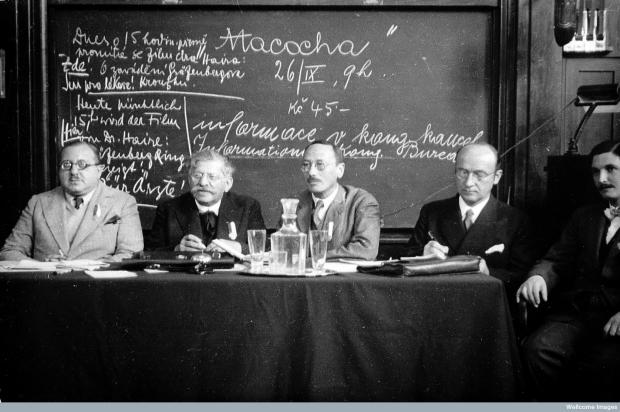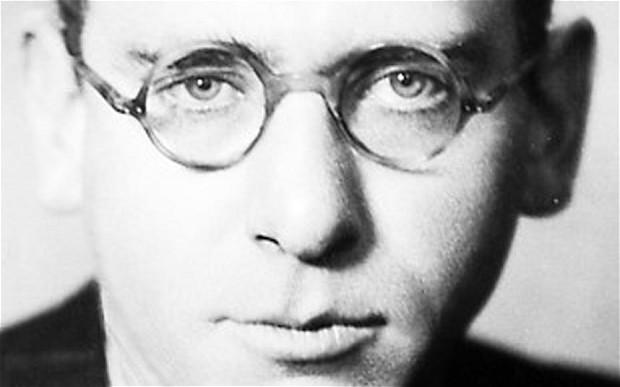The pitfalls of progress and the death of Utopia
‘Progress” is a word often bolted on to anything seen as vaguely agreeable. Few stop to ask what we might be progressing towards: you might after all be heading towards a brick wall; this could constitute progress in its way. Other rhetorical fads similarly demonstrate just how far and wide the teleological mindset has spread. It is common today to hear a person say of their enemy that they will be proved to have been on the “wrong side of history”. Despite the gradual disappearance of Marxism as a political force, history still apparently has a purpose and direction.
With progress in mind, a new book offers a useful reminder than even leftists ought to occasionally cultivate something of their inner conservative. Good things are after all easy to smash but much harder to create, as a conservative philosopher (I do not remember which one) once said.
Indeed, as Peter J Bowler demonstrates in his new book A History of the Future: Prophets of Progress from HG Wells to Isaac Asimov, many “progressives”,, have advocated truly appalling things. Here is Bowler on the mild-mannered Dean of St Paul’s, WR Inge, who in 1931 set out to predict the state of the world in 3000 AD:
“He hoped for the elimination of all diseases… As an enthusiast for the eugenics movement, he predicted a world in which only those with a fitness certificate would be allowed to breed, while the few remaining habitual criminals would be painlessly eliminated.”
Inge was speculating at a time when the prospect of a rationally planned state – including the management by bureaucrats of one’s right to live or die – was highly fashionable, even among clergymen. Progress of this sort would only lose its allure once the horrors of the Nazi regime had been exposed and the Cold War had dampened the futuristic penumbra surrounding Soviet communism.
HG Wells was unusual in that he was a novelist who also believed in the desirability of technological advancement
Yet even when the skies over Europe were darkening in the mid-1930s, there was a residual optimism that a new streamlined order might emerge on the other side of any conflagration. As Bowler notes, while the 1930s saw “a plethora of novels anticipating mass destruction through bombing, poison gas and even germ warfare”, it was also a period of excitement in which scientific innovation was expected to galvanise society.
Most of the future-orientated novels that emerged during this period could be divided into two categories. There were those that dwelt on the horrors of the new weapons of war, and those that looked instead to what might emerge on the other side of any conflict, which was usually a society controlled by technicians and “experts”.
It was novelists who on balance tended to be more pessimistic about the future, whereas scientists and futurologists typically adopted a sunnier outlook, and were less concerned with the broader implications of the inventions they were setting in motion.
HG Wells was unusual in that he was a novelist who also believed in the desirability of technological advancement. True, in his The Shape of Things to Come (1933), Wells had predicted that a war would obliterate civilisation. Earlier in the century too, his The War in the Air (1908) had similarly anticipated the destructive power of military aircraft. But the books in Wells’ oeuvre that dwelt gloomily on the destructive powers of technology were also didactic in another sense. They did not caution against technology tout court, but rather they carried a message that society ought to manage technology along rational lines and anoint a noble class of technicians to do it – a ‘scientific samurai’, as he called this elite in The Shape of Things to Come. Even The War in the Air concluded with the butterfly-like emergence of the type of technocratic world state desired by Wells.
In his 1901 book Anticipations – a work that HG Wells called “the keystone to the main arch of my work” – the author of classics such as the War of the Worlds and The Invisible Man called for the elimination of those he considered lesser humans. As Bowler puts it, in Wells’ Utopia “The unfit would be painlessly eliminated, the mentally ill would be encouraged to suicide out of a sense of duty and the inferior races of the world would face extinction”.
The cult of progress has powerful appeal to fascists and communists alike
Wells later stepped away from eugenics, but progress does seem to lend itself to an obsession, not only with perfection, but with an almost aesthetic mania for tidiness. The noticeable thing about the world imagined by futurologists is its essential sterility. Huge glass buildings and slick aeroplanes and monorails dominate the skyline. Every article or device is ghostly white or gunmetal. The difficult business of democracy has given way to rule by technocrats. Inferior types who besmirch the new order by their very existence are made to disappear like food scraps chewed up in a sink disposal unit.
The cult of progress as the antidote to the mess and chaos of our world has powerful appeal to fascists and communists alike. In their own way, both wish to escape the existentialist dilemma through the imposition of a society that resembles a beehive. Entire categories of people were slaughtered in both the Soviet Union and Germany for particular versions of progress, after all.
Elimination of chance is a common fascination among futurists and those who sought to parody them in novels. George Orwell’s Nineteen Eighty-Four is relatively thin in terms of predicting technological transformations that might occur in the future – Airstrip One is simply an adaptation of bombed-out London – but Orwell does focus on the methods his imagined ‘rationalists’ might use to do away with unplanned – and therefore potentially subversive – behaviour such as sexual desire. “The aim of the Party was not merely to prevent men and women from forming loyalties which it might not be able to control,” explains Nineteen Eighty-Four’s narrator. “Its real, undeclared purpose was to remove all pleasure from the sexual act.”
Other dystopian writers such as Aldous Huxley – who Bowler relies on rather too heavily for his examples in the text – parodied societies in which technology had modified people to be happy and fulfilled regardless of their lowly positions. Similarly, Olaf Stapledon’s Star Maker of 1937 envisioned a society in which human beings had been rendered slug-like by an entertainment system that was able to churn out any imaginable sensation through the direct stimulation of the brain.
Dystopian fiction can in this way lend itself to misanthropy – even Orwell had his proles stupidly humming along to the latest facile ditty pumped out by the Stalinoid ruling class. “He really did believe that capitalism controls the ‘proles’…not by physical oppression, but by bread and circuses,” Orwell’s biographer Bernard Crick wrote of the creator of Winston Smith.
Silicon Valley probably represents the closest thing we have today to the rationalist fanatics of the early twentieth century
There is also a danger of going full-tilt in the opposite direction, and becoming a sort of Sir Simon Jenkins figure, peevishly tossing out columns which rail against anything more advanced than the steam locomotive. There is a long and tedious tradition of this. In a 1936 review of a book by the founder of the British Interplanetary Society for the journal Nature, the English astronomer Sir Richard Woolley notoriously dismissed the prospect of future space exploration as “bilge”.
Yet one needn’t become the dyspeptic uncle who fires a bilious rhetorical canon at the onward march of civilisation to balk at those who want to casually sweep away the past in its entirety. Silicon Valley probably represents the closest thing we have today to the rationalist fanatics of the early twentieth century. And while comparisons between our own time and the 1930s are wildly overcooked – Trump is not Hitler for God’s sake – we do seem to be going through a comparable period in terms of our disillusionment with the Pollyanna belief in unstoppable progress. The glistening benevolence of “tech” is starting to lose its allure, just as the heady tide of progress looked rather less encouraging as science was put to the service of gas chambers and V-2 rockets in the 1930s. As Erin Griffith writes in her essay The Other Tech Bubble, “the privilege that techies have enjoyed for years is starting to erode”. There is a growing realisation that the solutions to the risks generated by technology cannot simply be more technology.
Despite being unnecessarily dense, Bowler’s book provides a useful reminder that the fantasies of today’s self-proclaimed “disrupters” are not as pioneering as they sometimes appear. Even if today’s techies preach diversity and eschew the eugenicist fantasies of their predecessors, they tend to view the world through a similar prism to the rationality-obsessed utopians of the past. What they crave is slickness and an end to struggle; a disinfected planet in which material conflicts no longer exist and where human beings are herded towards the same goal – a streamlined future in which supra-national corporations, unaccountable to elected governments, lead us benevolently over the horizon amidst a deluge of corporatese that sermonises anaemically about “openness” and “global community” (with a cattle prod presumable stashed away for the insubordinates of the future). The “disrupters” of Silicon Valley see themselves as the modern equivalent of Wells’ “Samurai” rulers in his novel A Modern Utopia: a self-appointed nobility that takes it upon itself to plot humanity’s next course.
The shortcomings of grandiose ideas of this sort are, as always, the flesh and blood human being who are supposed to meekly submit to them. There is no Big Brother, or Benefactor, or aristocracy of warriors who can incorporate our disparate and competing interests into one single vision of progress. As the Israeli historian Yuval Noah Harari puts it in his bestselling Homo Deus: A Brief History of Tomorrow, “Those living in palaces have always had different agendas to those living in shacks, and that is unlikely to change in the twenty-first century”.
Huxley’s patricians administered “Soma” to the potentially troublesome underclass of his Brave New World to pacify them – a pleasure drug that induced feelings of contentment even in the lowly and servile. Unless today’s utopians are able to come up with something similar – which isn’t completely beyond the realms of the possible – future human progress will likely be as untidy and pregnant with danger as it has been in the past. Paradoxically, that might be about our best hope of retaining a world that is still worth living in.





